written by Valentina Biondini, literature expert
 This time “Who’s next?” is dedicated to one of the most eclectic female talents of the Italian twentieth century, wrongly underestimated. We refer to Anna Banti, nom de plume of the versatile Lucia Lopresti, art historian, literary, theater and film critic, translator and, above all, Italian writer of the last century. And it is precisely this overlapping of artistic contexts, together with feminine and autobiographical themes, that will make her modus scrivendi original and unique for the literary landscape of the time.
This time “Who’s next?” is dedicated to one of the most eclectic female talents of the Italian twentieth century, wrongly underestimated. We refer to Anna Banti, nom de plume of the versatile Lucia Lopresti, art historian, literary, theater and film critic, translator and, above all, Italian writer of the last century. And it is precisely this overlapping of artistic contexts, together with feminine and autobiographical themes, that will make her modus scrivendi original and unique for the literary landscape of the time.
Lucia Lopresti was born in Florence in 1895. As the only daughter of a family of Sicilian origin, she received an education that we can define as free. In fact her parents, to whom she is very attached, allow her to choose independently and to travel. The father in particular, Luigi-Vincenzo, lawyer of the Railways, given the natural propensity of his daughter, encourages her to take up humanities studies. However, hers is a lonely childhood. She feels little understood by her mother and, as a consoling remedy, she soon takes refuge in writing. She spends her childhood first in Bologna, then in Rome and finally back in Tuscany. At school, for her shy and independent nature, she is branded as weird and feminist. Therefore, for the artist, writing will become not only a means to probe those inner agitations that prodded her, but also to reveal her true nature. Years later, in fact, one of her female characters will say: «Black on white is a risk, but also an exorcism».
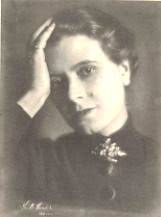 During her last high school year she has two encounters that will change her life: with history of art and with Roberto Longhi, her professor and art historian, who makes her fall in love. Not only a great love is born between the two, but also an extraordinary intellectual partnership that will last for a lifetime. After the wedding, however, Banti comes to a decision that will change the course of her destiny: to set aside history of art to devote herself to writing. Since her husband is already a successful art historian, Lucia decides to try success in another sector. In short, just when her studies would naturally lead her to become interested in art, to follow her husband to Paris and London, to deepen the forms and brushstrokes of artistic works, something unexpected happens. In front of the paintings she realizes that she is more involved in the story portrayed than in the painting itself. And it is precisely from those canvases that her stories begin to emerge and her characters come to life.
During her last high school year she has two encounters that will change her life: with history of art and with Roberto Longhi, her professor and art historian, who makes her fall in love. Not only a great love is born between the two, but also an extraordinary intellectual partnership that will last for a lifetime. After the wedding, however, Banti comes to a decision that will change the course of her destiny: to set aside history of art to devote herself to writing. Since her husband is already a successful art historian, Lucia decides to try success in another sector. In short, just when her studies would naturally lead her to become interested in art, to follow her husband to Paris and London, to deepen the forms and brushstrokes of artistic works, something unexpected happens. In front of the paintings she realizes that she is more involved in the story portrayed than in the painting itself. And it is precisely from those canvases that her stories begin to emerge and her characters come to life.
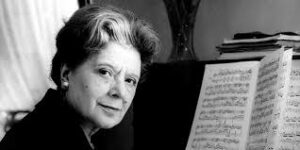 Her adventure as a writer begins in 1930, with the publication of the short story “Barbara e la morte”. At the same time, she starts to use a pseudonym, Anna Banti, which she defines as: “My real name, the one that was not given to me neither by family nor husband”. But who is really Anna Banti, the sublime mask behind which she chooses to hide her identity? This name had belonged to an elegant and mysterious noblewoman, a relative of her mother. A lady, always veiled in white, who attracts the curiosity of Lopresti since she was a child and reappears when she has to decide how to sign her works. «After all, we make our own name. It is not necessarily that we are the name of our birth for our entire life”, she said in an interview in 1983. With the debut in 1930, a vast and long-lasting production begins, whose time span ends in 1981, about fifty years after the first work and four before her death. It includes a total of seven collections of short stories, nine novels and numerous essays.
Her adventure as a writer begins in 1930, with the publication of the short story “Barbara e la morte”. At the same time, she starts to use a pseudonym, Anna Banti, which she defines as: “My real name, the one that was not given to me neither by family nor husband”. But who is really Anna Banti, the sublime mask behind which she chooses to hide her identity? This name had belonged to an elegant and mysterious noblewoman, a relative of her mother. A lady, always veiled in white, who attracts the curiosity of Lopresti since she was a child and reappears when she has to decide how to sign her works. «After all, we make our own name. It is not necessarily that we are the name of our birth for our entire life”, she said in an interview in 1983. With the debut in 1930, a vast and long-lasting production begins, whose time span ends in 1981, about fifty years after the first work and four before her death. It includes a total of seven collections of short stories, nine novels and numerous essays.
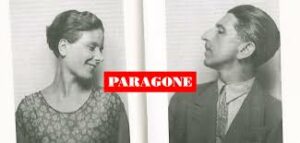 These last ones appear for the most part on “Paragone”, the magazine of Art and Literature, founded with her husband in 1949. The monthly publication plays an important role in the history of Italian literature of the twentieth century, hosting among its pages some of the most popular Italian writers, such as Ungaretti and Pasolini. Banti manages the literary part of the magazine, and then she takes over the direction of the art section when her husband dies in 1970. The narrative vocation was therefore not only a stimulus of creativity but also and above all of personal independence. In her first works the themes that will distinguish all her artistic production are already evident. That is, the attention paid to the female condition and psychological introspection.
These last ones appear for the most part on “Paragone”, the magazine of Art and Literature, founded with her husband in 1949. The monthly publication plays an important role in the history of Italian literature of the twentieth century, hosting among its pages some of the most popular Italian writers, such as Ungaretti and Pasolini. Banti manages the literary part of the magazine, and then she takes over the direction of the art section when her husband dies in 1970. The narrative vocation was therefore not only a stimulus of creativity but also and above all of personal independence. In her first works the themes that will distinguish all her artistic production are already evident. That is, the attention paid to the female condition and psychological introspection.
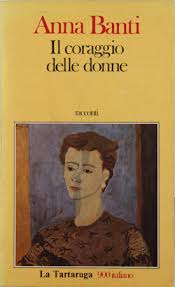 Among her numerous works of fiction it is worth mentioning: “Itinerario di Paolina”(1937) her first novel and transposed autobiography, “Il coraggio delle donne” (1940), “Sette lune” (1941), “Le monache cantano” (1942), “Artemisia” (1947) her best known novel as well as her first real success, “Le donne muoiono” (1951), “Il bastardo” (1953), “Allarme sul lago” (1954), “Noi credevamo” (1967)which acquired fame thanks to the homonymous film by Mario Martone in 2010, “La camicia bruciata”(1973) and “Un grido lacerante” (1981),the last evidence that ideally concludes the circle opened with her first work, since in both cases they are transposed autobiographies. Among those just listed, “Artemisia”, “Noi credevamo” and “La camicia bruciata” are considered as her great historical interpretations. In fact, Banti preferred to define her novels not so much historical but “poetic interpretations of history”. After all, what the writer pursued was a completely personal literary genre, in which the historical invention became the expedient to bring the attention back to the condition of women, or rather on their distancing from history. In fact, Banti’s intent seems to be to denounce the lack of a “feminine” past from the traditional historical memory.
Among her numerous works of fiction it is worth mentioning: “Itinerario di Paolina”(1937) her first novel and transposed autobiography, “Il coraggio delle donne” (1940), “Sette lune” (1941), “Le monache cantano” (1942), “Artemisia” (1947) her best known novel as well as her first real success, “Le donne muoiono” (1951), “Il bastardo” (1953), “Allarme sul lago” (1954), “Noi credevamo” (1967)which acquired fame thanks to the homonymous film by Mario Martone in 2010, “La camicia bruciata”(1973) and “Un grido lacerante” (1981),the last evidence that ideally concludes the circle opened with her first work, since in both cases they are transposed autobiographies. Among those just listed, “Artemisia”, “Noi credevamo” and “La camicia bruciata” are considered as her great historical interpretations. In fact, Banti preferred to define her novels not so much historical but “poetic interpretations of history”. After all, what the writer pursued was a completely personal literary genre, in which the historical invention became the expedient to bring the attention back to the condition of women, or rather on their distancing from history. In fact, Banti’s intent seems to be to denounce the lack of a “feminine” past from the traditional historical memory.
 “Artemisia” in particular is her literary masterpiece. The work narrates the fictional life of the seventeenth-century painter Artemisia Gentileschi, misunderstood daughter of the painter Orazio, dishonored by Agostino Tassi, a painter in turn, condemned to an existence of loneliness and diversity as a woman and moreover a talented woman. In short, an “exceptional woman, neither bride nor girl”, fighting against the prejudices of her time who, despite the adversities, decides to show everyone who she really is, that is a very talented painter. It has been noticed how this heroine sums up the main interests of her author: painting, writing, the concept of talent and the complicated way of affirming it when somebody is born a woman. After all, many critics, including Gianfranco Contini, confirm that the great theme underlying Banti’s production is precisely that of the female condition. Bantian women, infact, are essentially women who fight against the current. Against fathers, husbands and lovers who annihilate them. They are women that historical memory has erased, while on the contrary it has preserved that of their husbands. A concept that evidently emerges in the collection “Le donne muoiono”.
“Artemisia” in particular is her literary masterpiece. The work narrates the fictional life of the seventeenth-century painter Artemisia Gentileschi, misunderstood daughter of the painter Orazio, dishonored by Agostino Tassi, a painter in turn, condemned to an existence of loneliness and diversity as a woman and moreover a talented woman. In short, an “exceptional woman, neither bride nor girl”, fighting against the prejudices of her time who, despite the adversities, decides to show everyone who she really is, that is a very talented painter. It has been noticed how this heroine sums up the main interests of her author: painting, writing, the concept of talent and the complicated way of affirming it when somebody is born a woman. After all, many critics, including Gianfranco Contini, confirm that the great theme underlying Banti’s production is precisely that of the female condition. Bantian women, infact, are essentially women who fight against the current. Against fathers, husbands and lovers who annihilate them. They are women that historical memory has erased, while on the contrary it has preserved that of their husbands. A concept that evidently emerges in the collection “Le donne muoiono”.
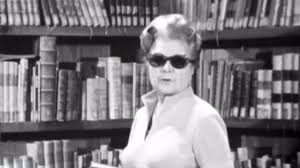 Thus the literary genre of Banti is outlined more clearly. That is, interpreting the story by filling in the gaps with the imagination and taking on the task of telling stories of women who have never been told, of which no sign seems to have remained in the official memory. Hers is, therefore, an epistemological and historiographic operation equal, and preceding, to the proofs of Linda Nochlin in “Why Have There Been No Great Women Artists?” or Lea Vergine in “L’altra avanguardia”. And, since she always writes about women, the label of feminist is immediately stuck on her. But hers, however, is an intimate and non-militant feminism, perhaps even unconscious at first. Certainly Anna Banti’s feminism is expressed through stories of unhappy women/heroines, trapped in their pre-established lives, trying to escape their destiny. Maybe then the real theme of her narration is the loneliness of the woman, always in search of her own dignity and redemption. And it is precisely this desire to redeem the female condition that the writer outlines in her stories, using a hybrid genre, halfway between autobiography and fiction, in which the fates of her characters are reversed, and leave room for the real possibility of a change. And together with her heroines, Lucia/Anna also redeems herself, freeing with the creative power of writing, the resourcefulness of all women along with hers.
Thus the literary genre of Banti is outlined more clearly. That is, interpreting the story by filling in the gaps with the imagination and taking on the task of telling stories of women who have never been told, of which no sign seems to have remained in the official memory. Hers is, therefore, an epistemological and historiographic operation equal, and preceding, to the proofs of Linda Nochlin in “Why Have There Been No Great Women Artists?” or Lea Vergine in “L’altra avanguardia”. And, since she always writes about women, the label of feminist is immediately stuck on her. But hers, however, is an intimate and non-militant feminism, perhaps even unconscious at first. Certainly Anna Banti’s feminism is expressed through stories of unhappy women/heroines, trapped in their pre-established lives, trying to escape their destiny. Maybe then the real theme of her narration is the loneliness of the woman, always in search of her own dignity and redemption. And it is precisely this desire to redeem the female condition that the writer outlines in her stories, using a hybrid genre, halfway between autobiography and fiction, in which the fates of her characters are reversed, and leave room for the real possibility of a change. And together with her heroines, Lucia/Anna also redeems herself, freeing with the creative power of writing, the resourcefulness of all women along with hers.
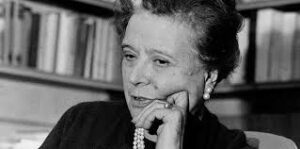 At this point it is natural to wonder why a unique and unmistakable figure in the Italian panorama like that of Banti is so little known. It has been said that her main characteristic was the intellectual pride. In fact, she did not want to be confused with others, and led a retired life, devoting herself to writing in a productive but hidden way. A fine scholar who struggled to find herself and who, behind the granite facade of a woman of power (she was however the co-director of the magazine “Paragone”, therefore for decades she had exercised a power, at least in the publishing field), concealed an underground and creeping restlessness, as emerges from her latest transposed biography “Un grido lacerante”. So, a respected, honored and revered figure, but watched from afar. A cultured art critic lent to fiction (or vice versa?), whose rich, elegant and baroque prose – it is appropriate to use this adjective, given her omnipresent contamination between art and literature – remained distant from the average public and theirs more immediate and prosaic tastes. However, an artist who committed to preserve her own identity and that of many other women through her works, thus leaving indelible traces of them.
At this point it is natural to wonder why a unique and unmistakable figure in the Italian panorama like that of Banti is so little known. It has been said that her main characteristic was the intellectual pride. In fact, she did not want to be confused with others, and led a retired life, devoting herself to writing in a productive but hidden way. A fine scholar who struggled to find herself and who, behind the granite facade of a woman of power (she was however the co-director of the magazine “Paragone”, therefore for decades she had exercised a power, at least in the publishing field), concealed an underground and creeping restlessness, as emerges from her latest transposed biography “Un grido lacerante”. So, a respected, honored and revered figure, but watched from afar. A cultured art critic lent to fiction (or vice versa?), whose rich, elegant and baroque prose – it is appropriate to use this adjective, given her omnipresent contamination between art and literature – remained distant from the average public and theirs more immediate and prosaic tastes. However, an artist who committed to preserve her own identity and that of many other women through her works, thus leaving indelible traces of them.